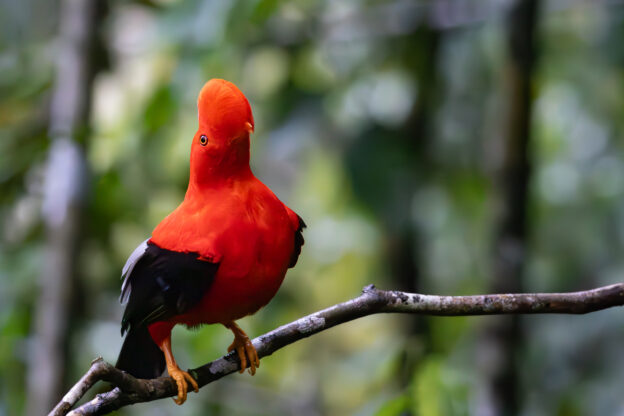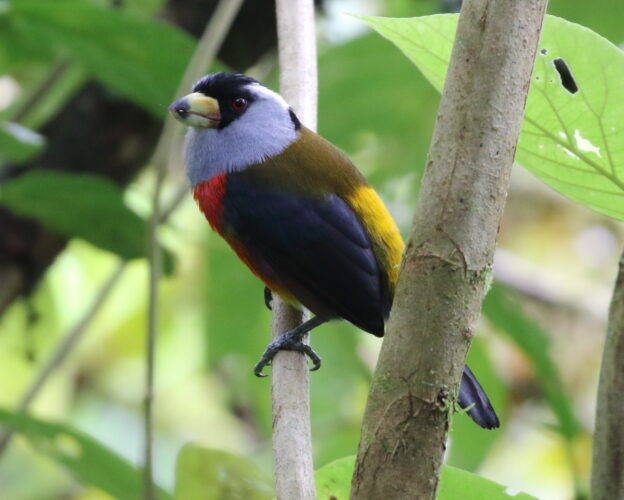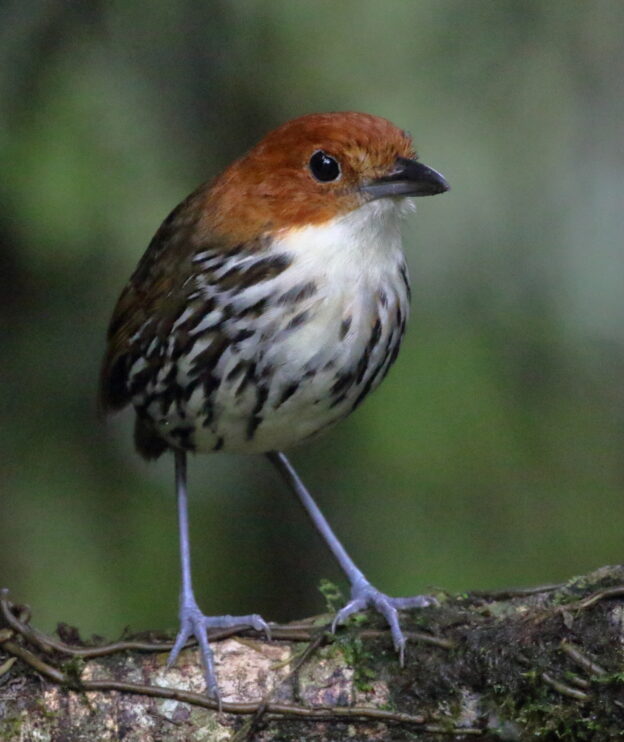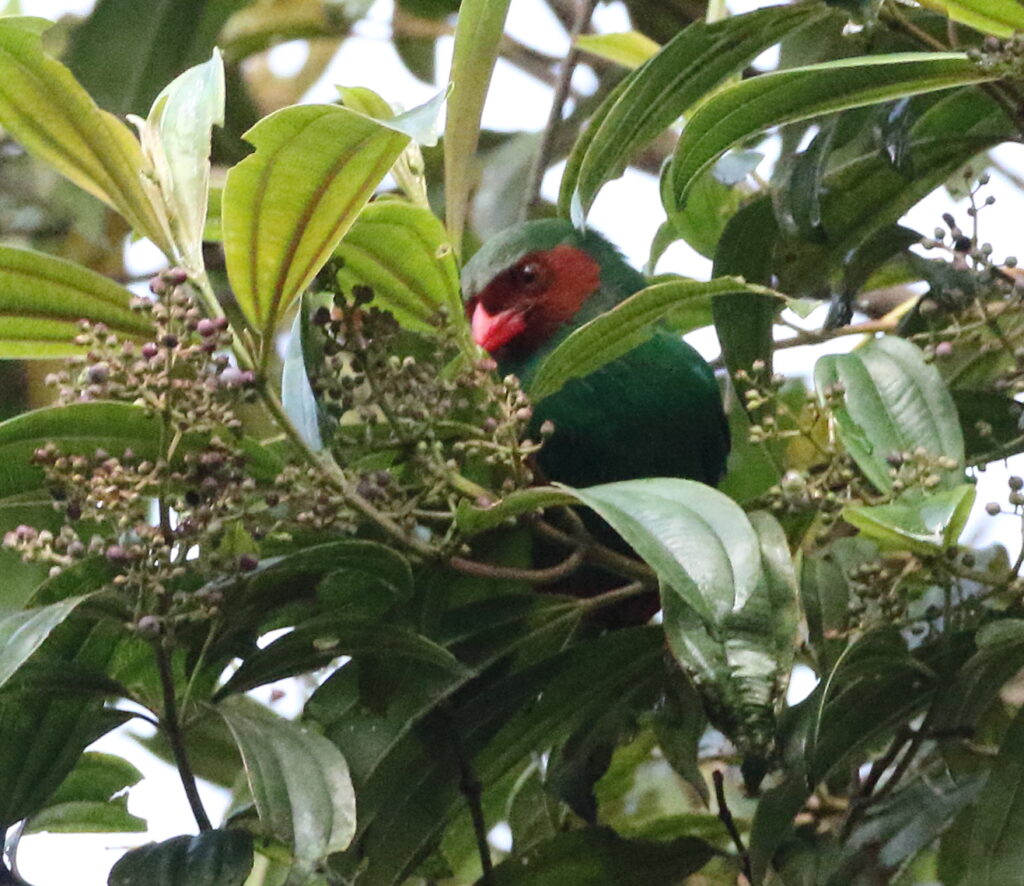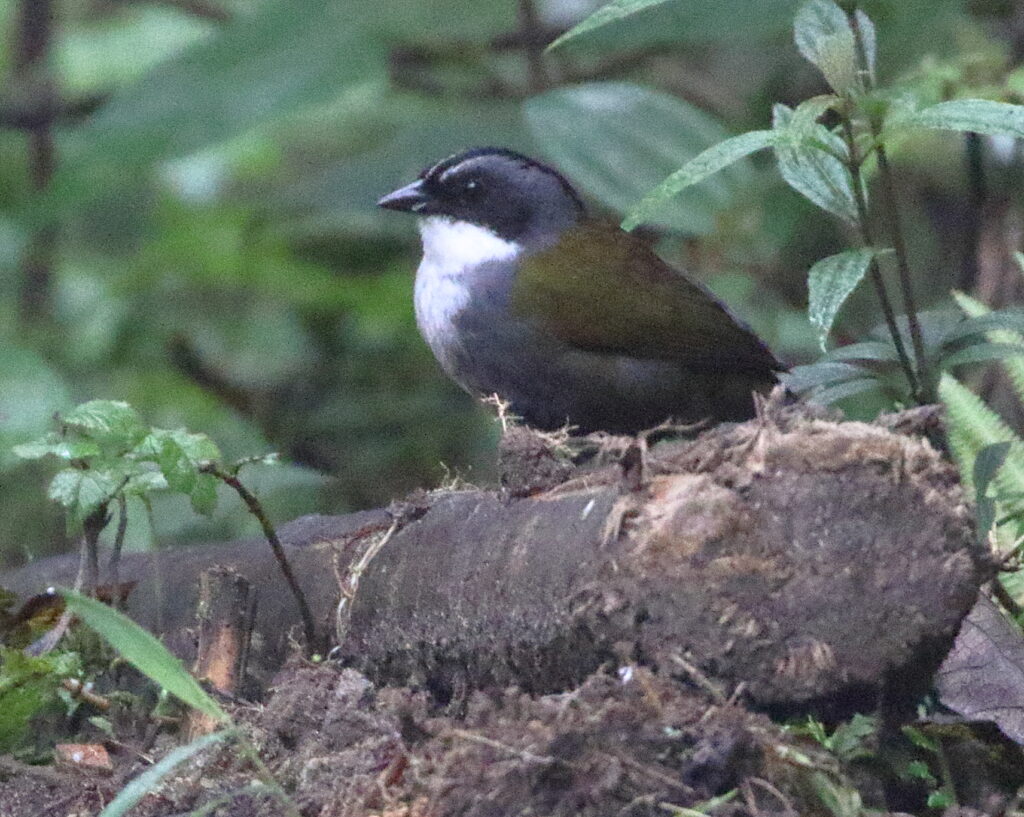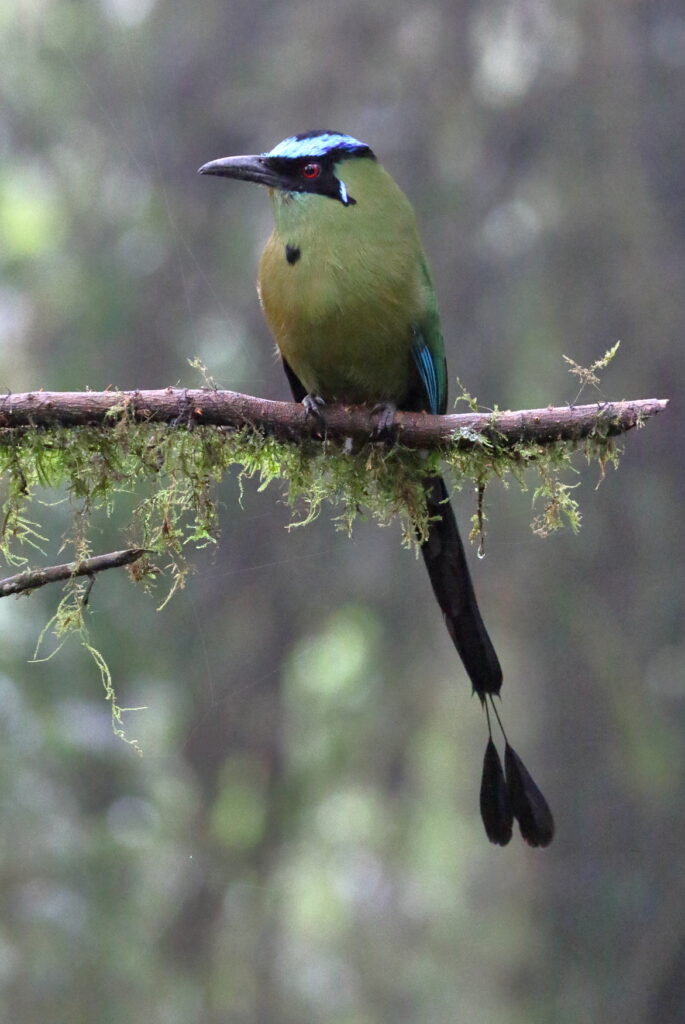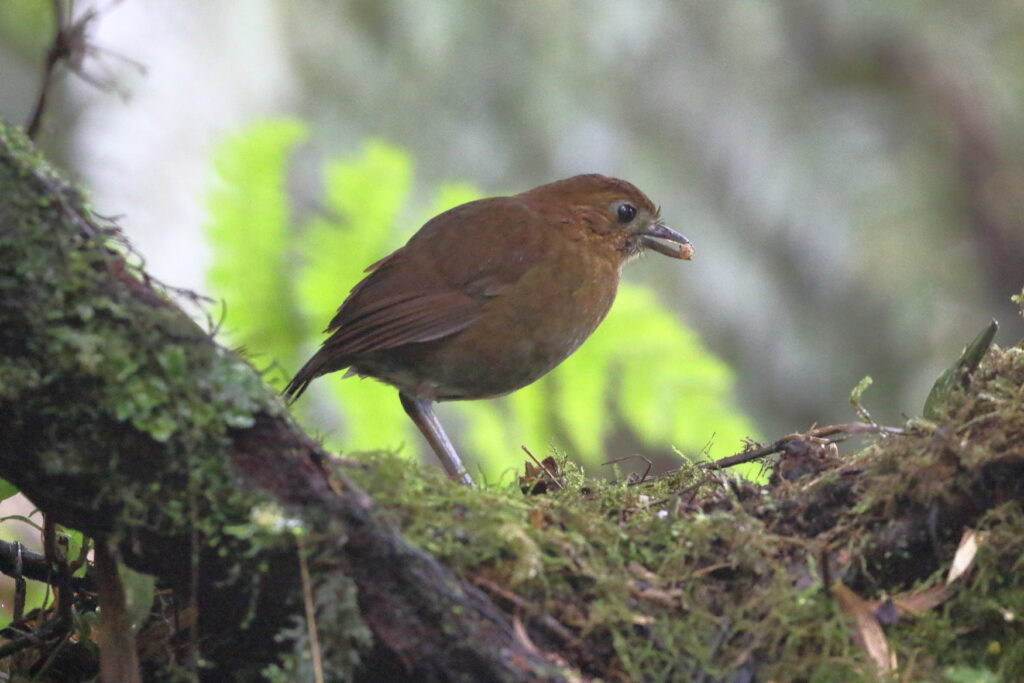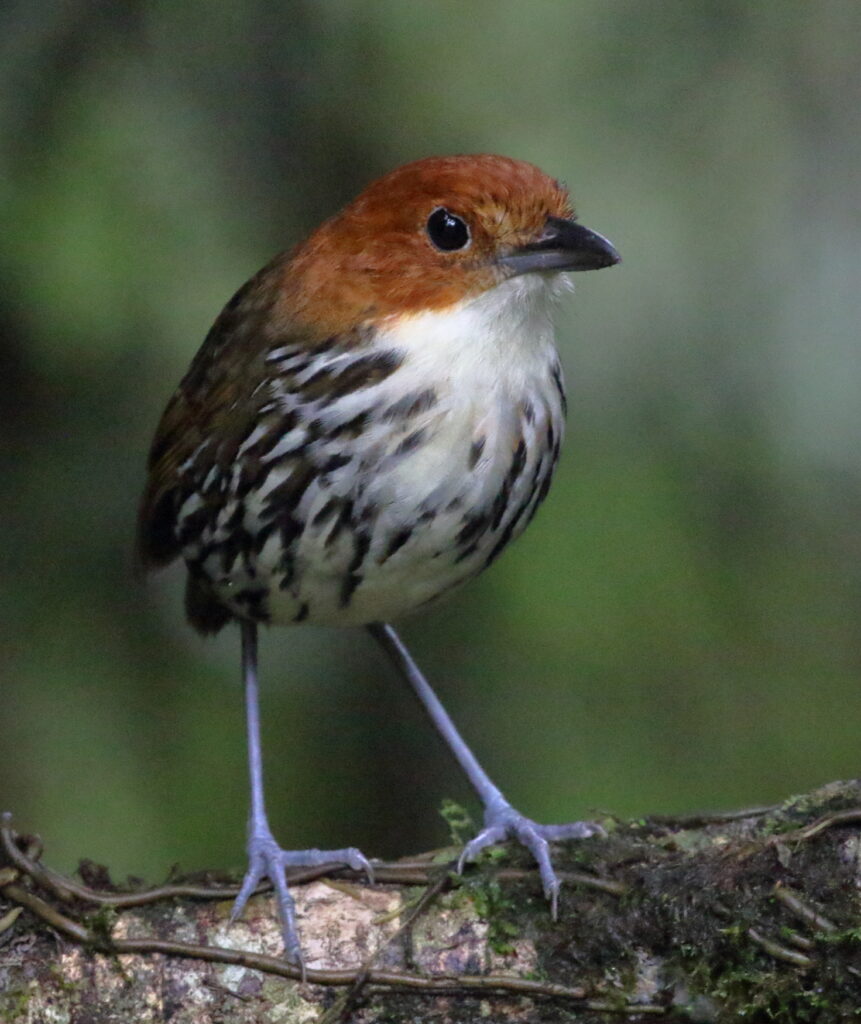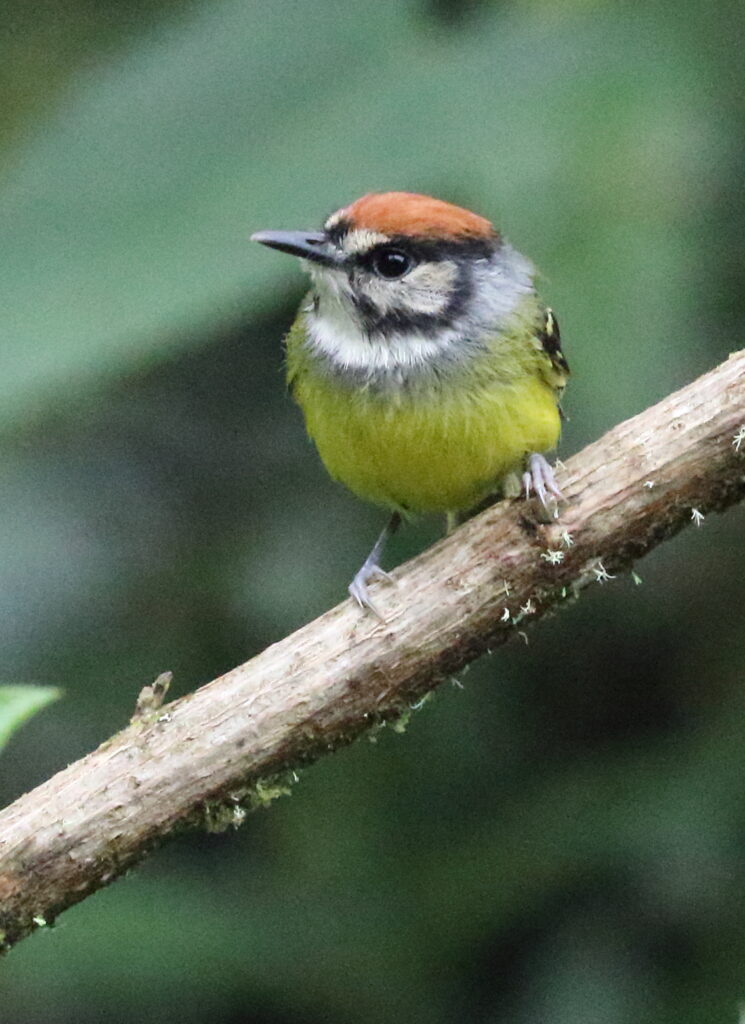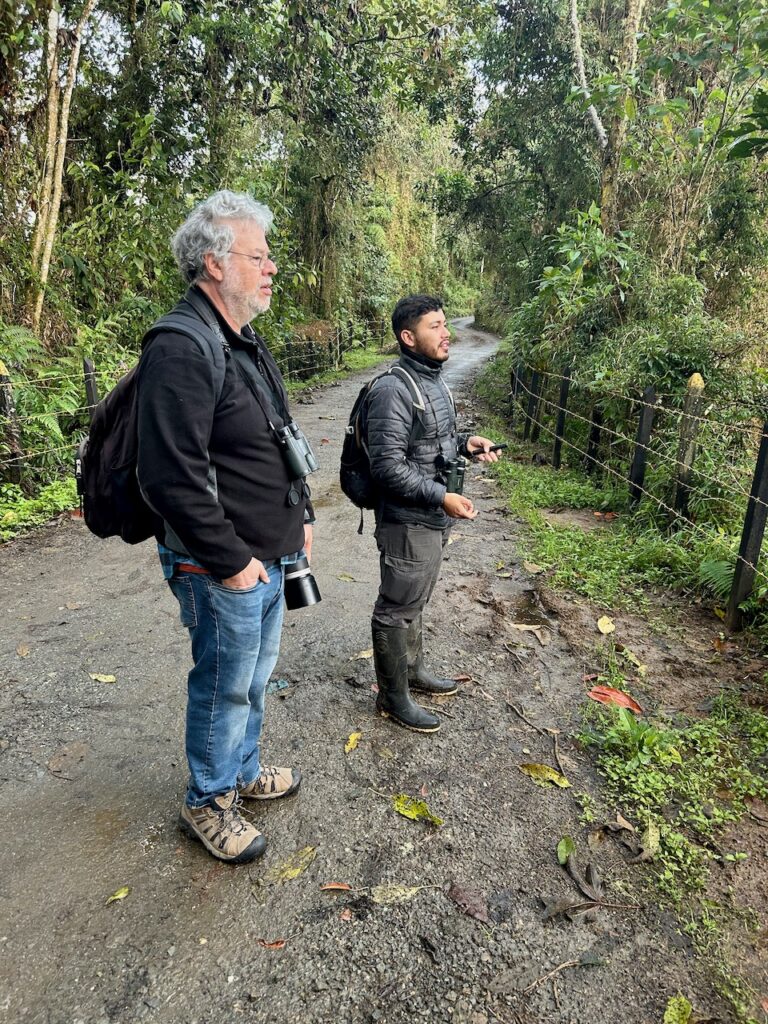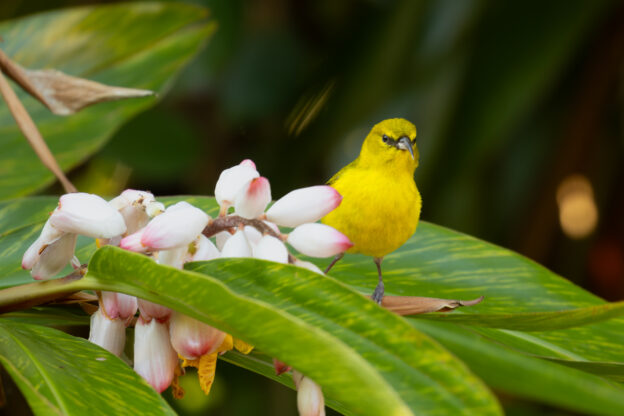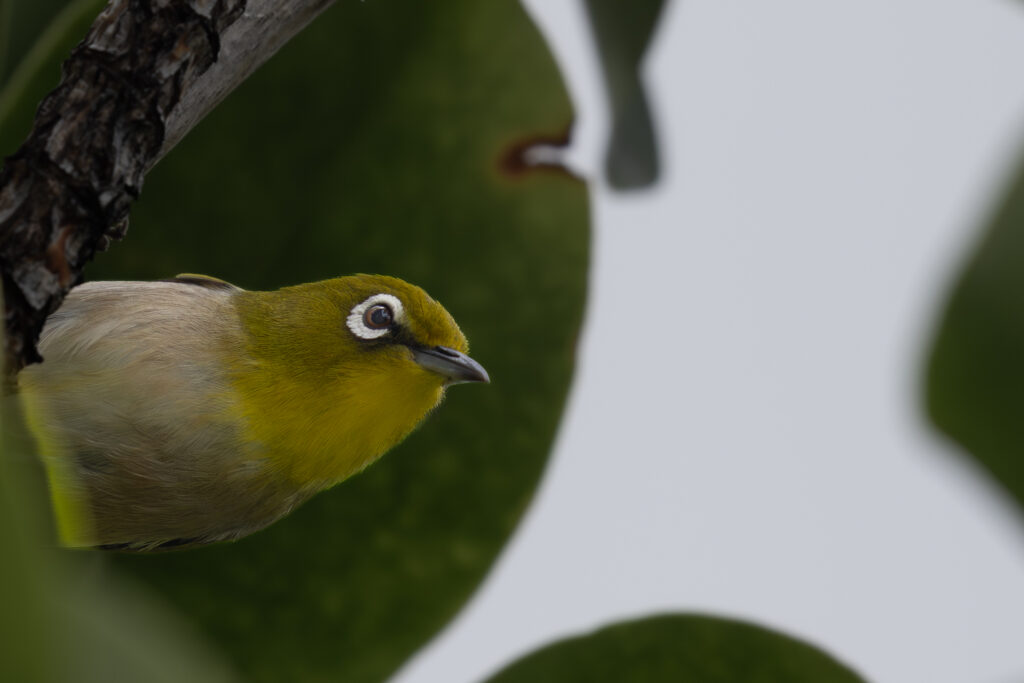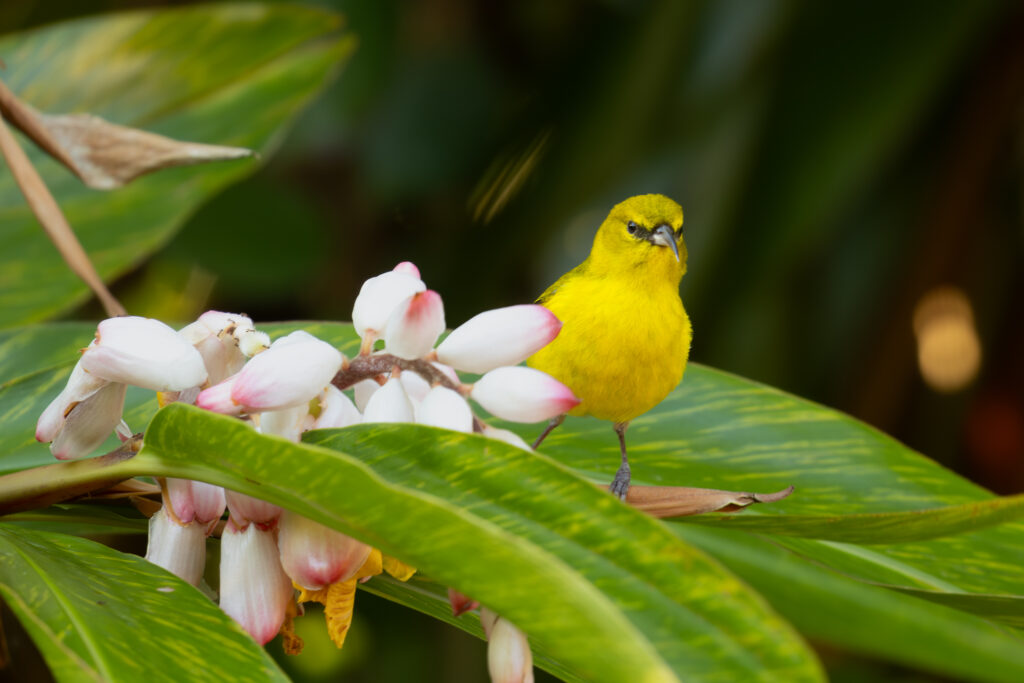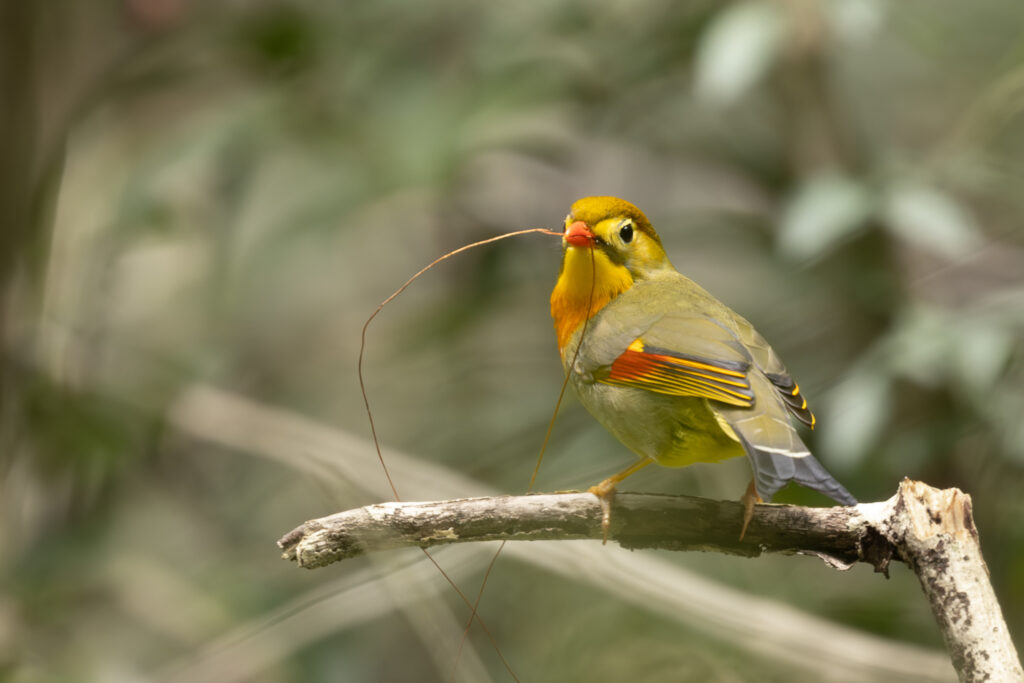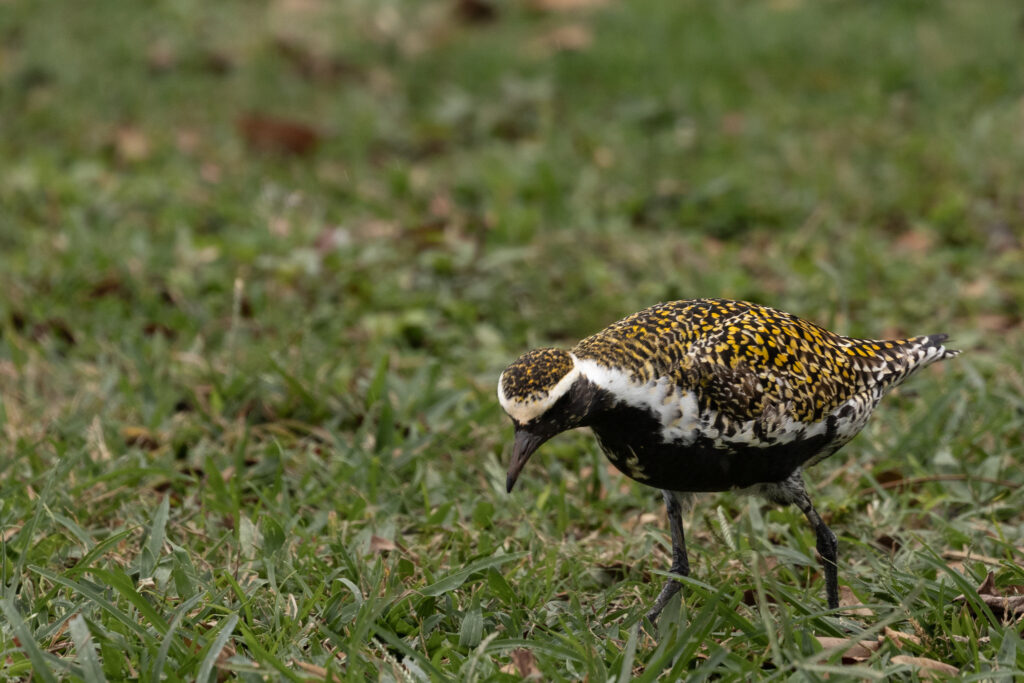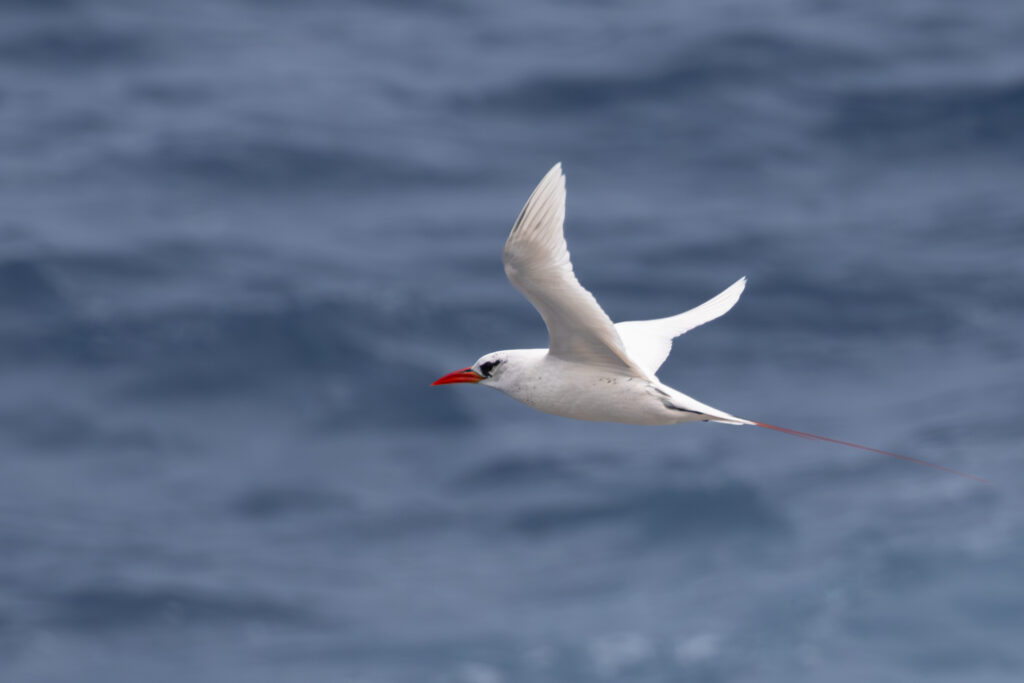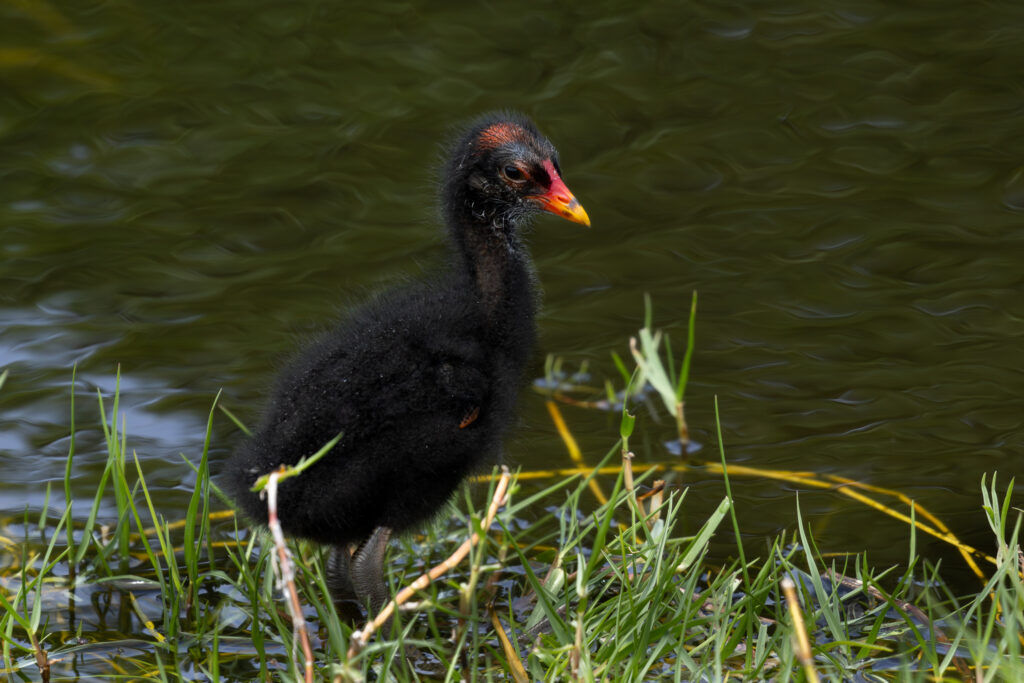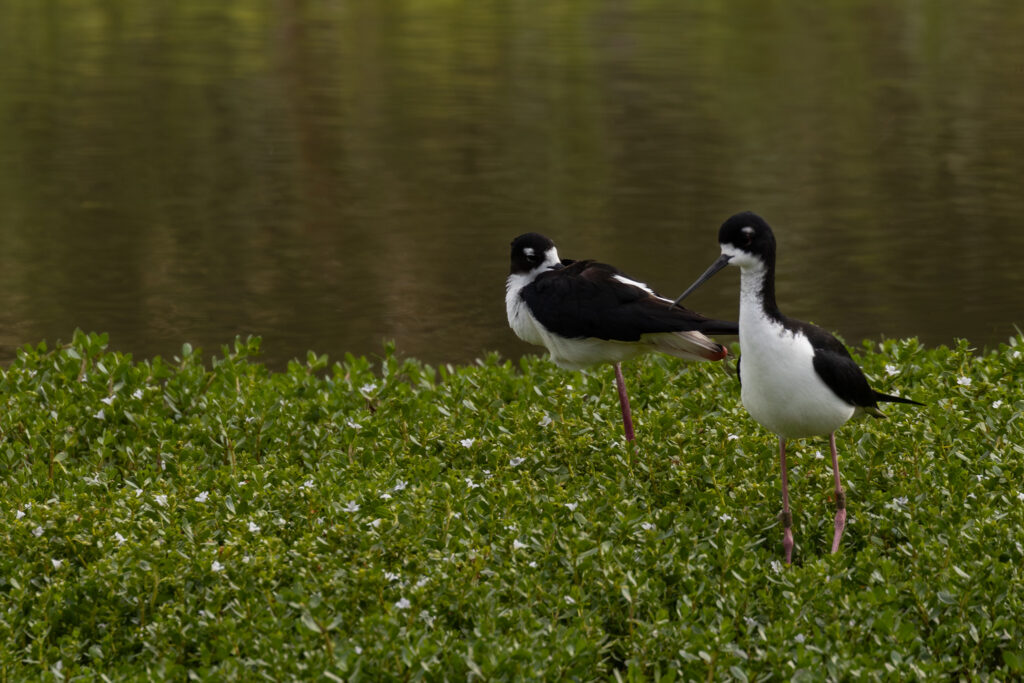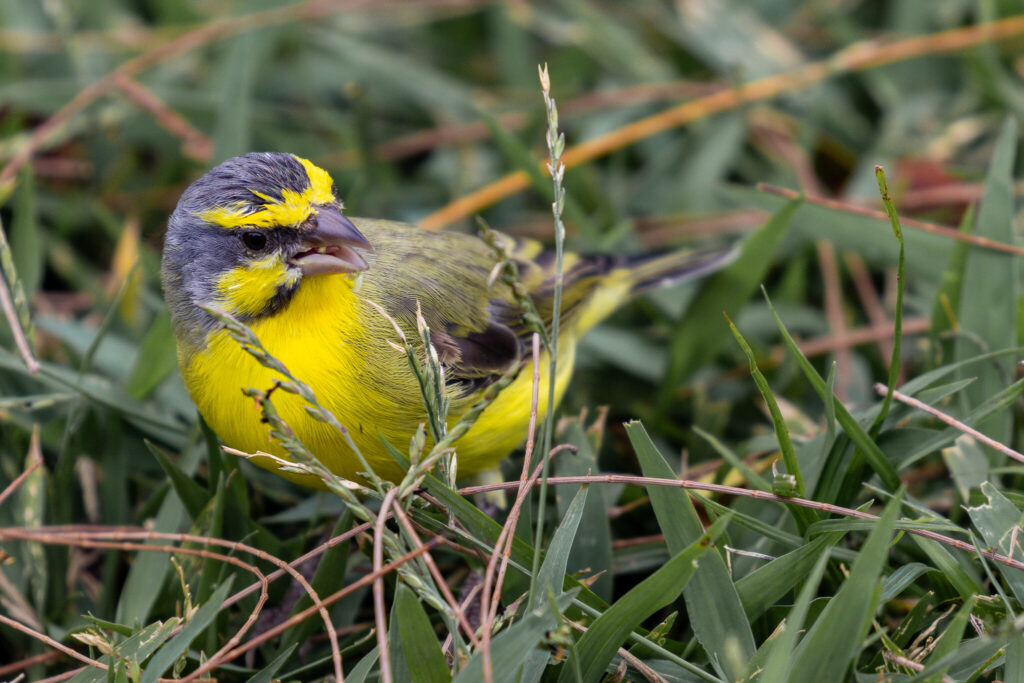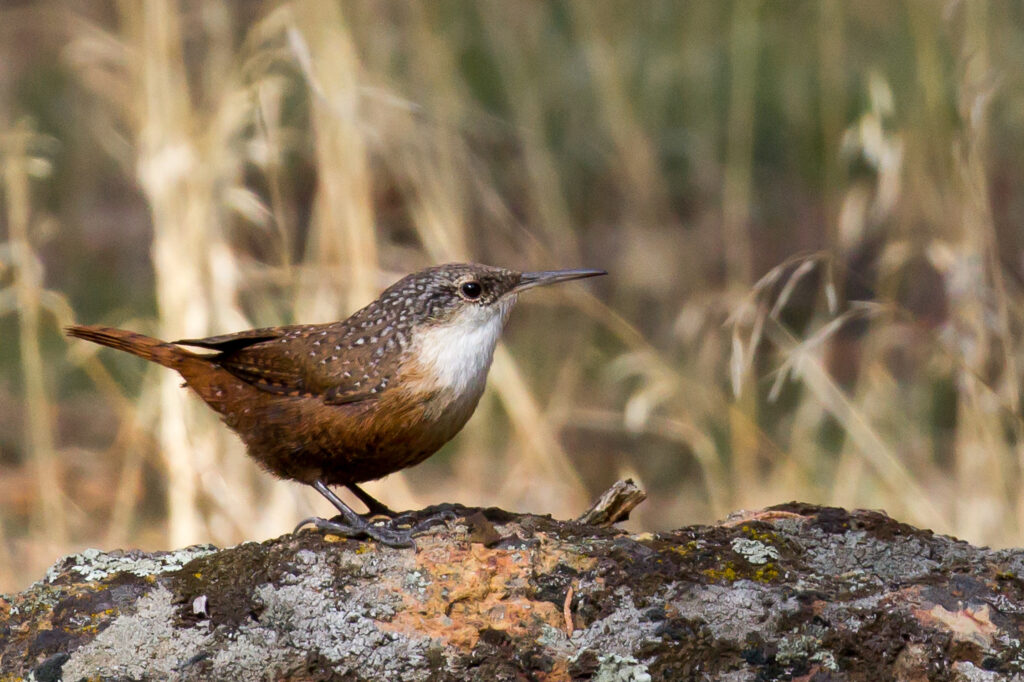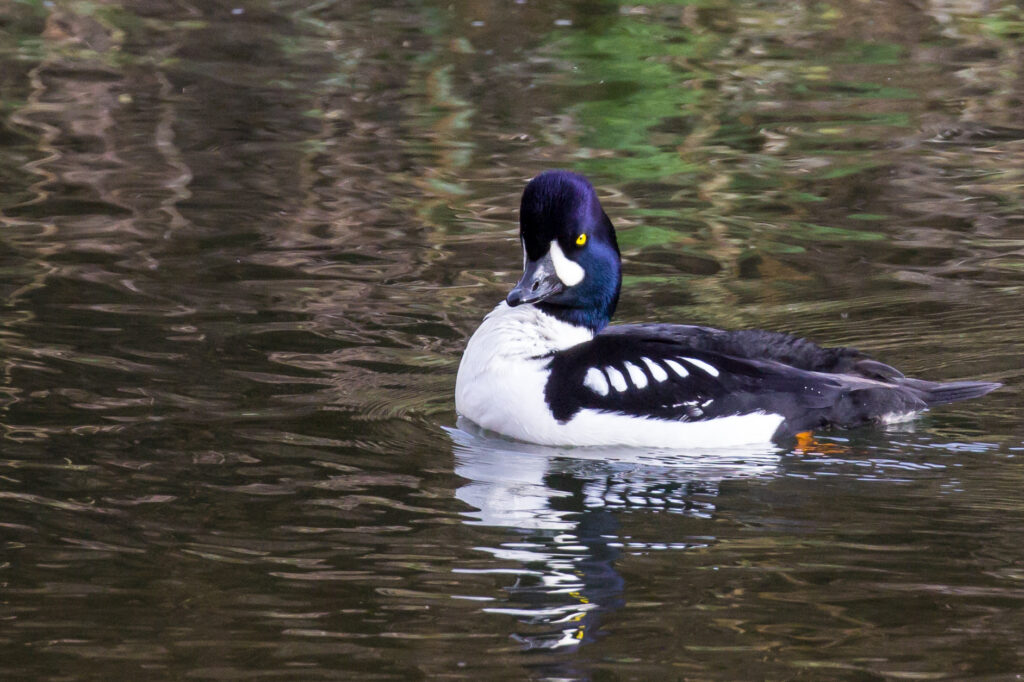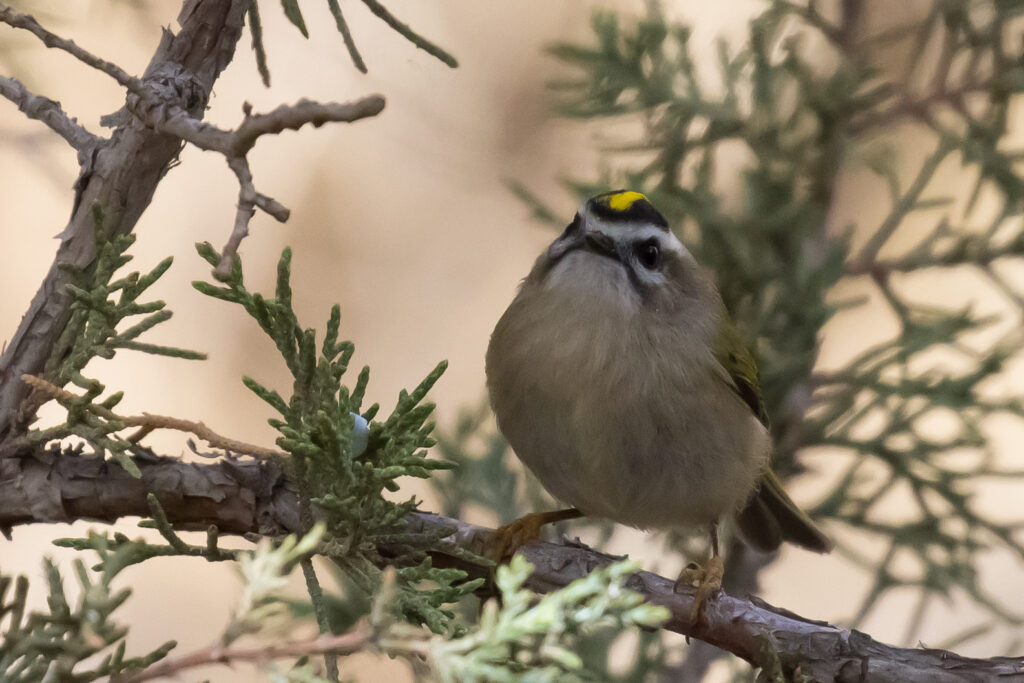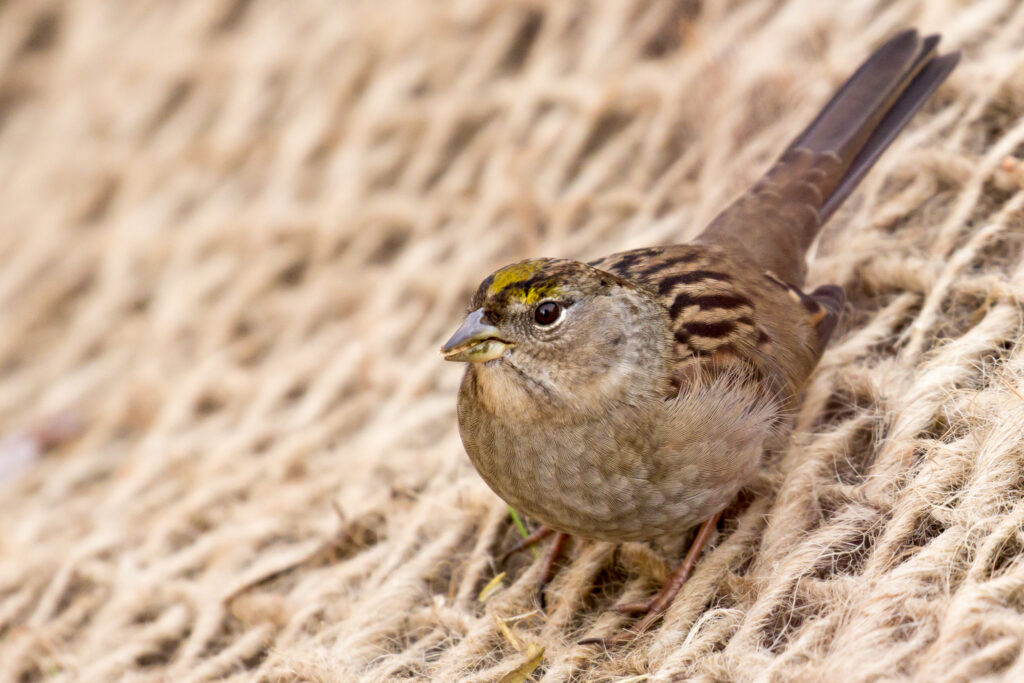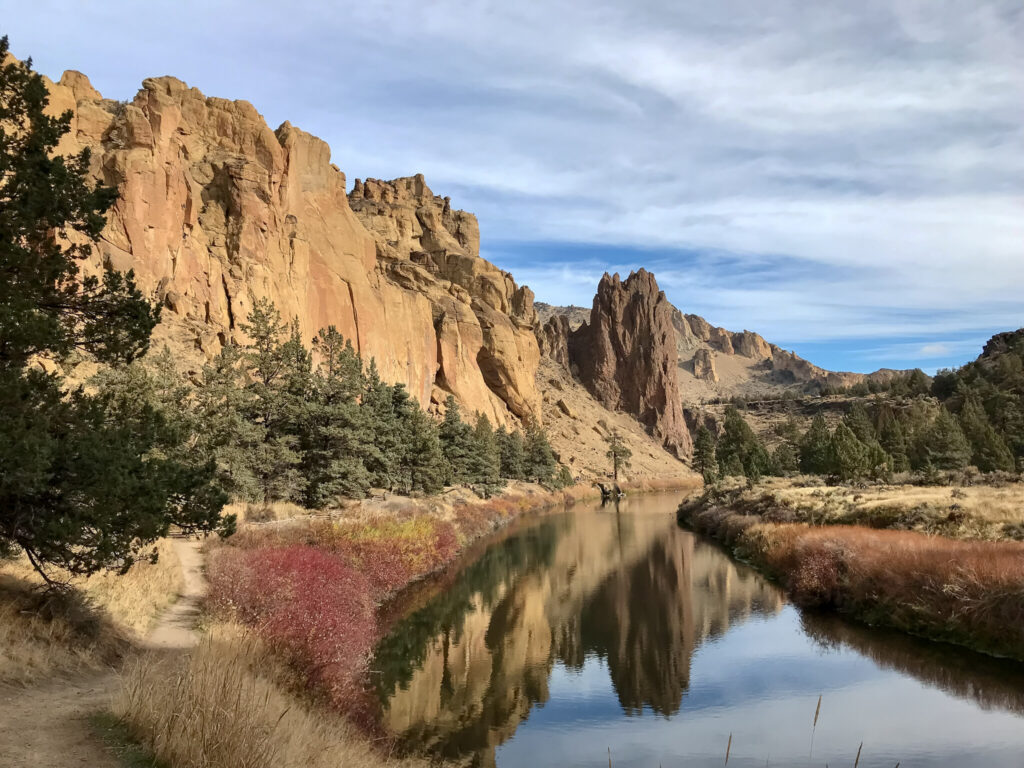We wrap up our Colombian birding blogs with a terrific post by Roger Kohn, sharing his recent experiences with one of South America’s most famous birds—the Andean Cock-of-the-Rock. If you’ve been reading recent posts, you know that in addition to being a past guest contributor to FSB, Roger was the evil genius behind getting Sneed to Colombia! Alas, an injury kept Sneed from seeing the cock-of-the-rock this time around, but Roger was able to experience these wondrous birds in full glory. He even took an awesome video of a male Andean COTR that’s almost like being there. Our big thanks go out to Roger, and we know you will enjoy this post. Oh, and be sure to watch the Cock-of-the-Rock video below!
Four a.m. My cell phone alarm chirped and the screen lit up and pierced the early morning blackness, rousting me from a sound sleep. If you want to see one of the iconic birds of the Andes, you’d better be dragging yourself out of bed well before dawn!
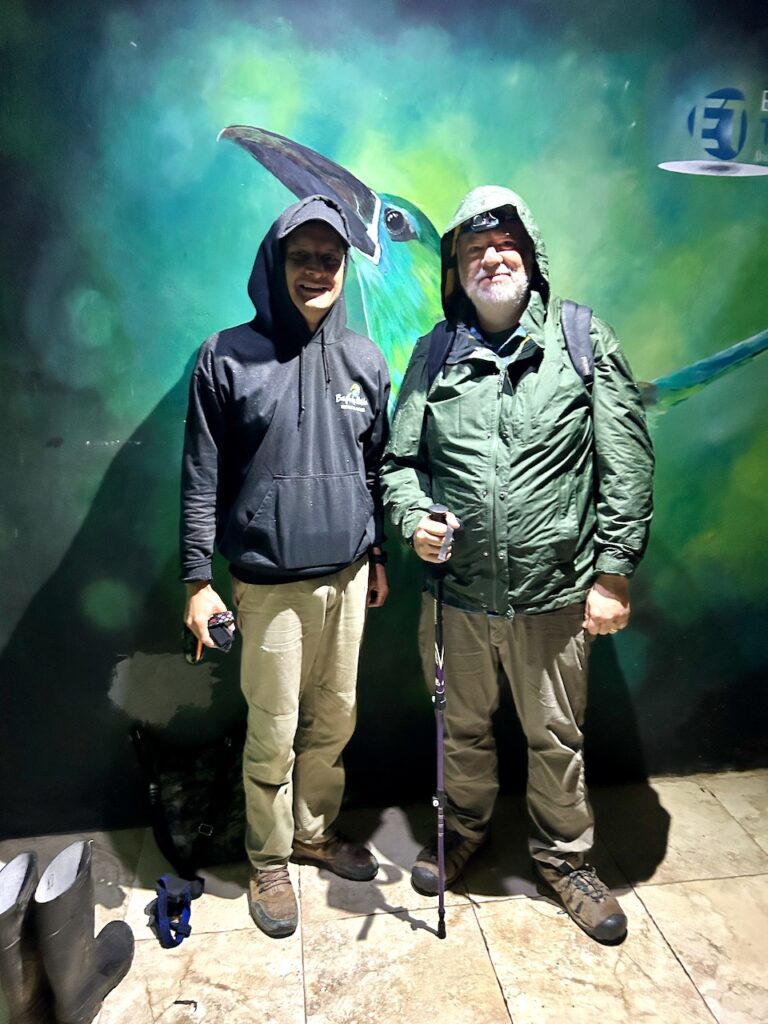
Today was one of the most anticipated days of my Colombia birding expedition. Sneed and I would visit “Alto Anchicayá – El Descanso,” commonly referred to as Doña Dora’s place. The owner, Doña Dora, began her business by selling empanadas and coffee to workers on their way to and from a nearby hydro-electric facility. The small restaurant quickly became popular with birders because its location, perched in the cloud forest at about 4,000 feet above sea level in Colombia’s Western Andes, attracts a huge variety of bird species to its feeders and offers some of the best birding in South America. As if that weren’t enough, birders have the opportunity to see the Andean Cock-of-the-Rock, a bizarre-looking bird that inhabits narrow ribbons of cloud forest slicing through the Andes of Bolivia, Peru, Ecuador, Colombia, and Venezuela.
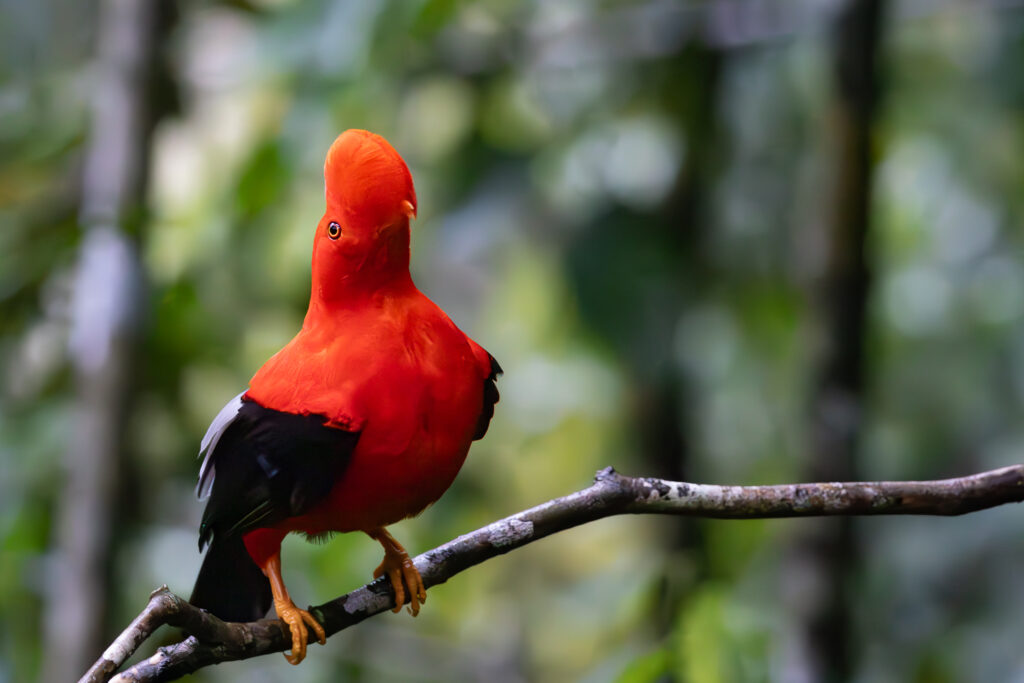
After Sneed and I downed a quick cup of coffee and a muffin, our guide Luis picked us up at the Araucana Lodge (see “Video Post: A Visit to Araucana Lodge”) at 4:30 a.m. Light rain fell as we drove west for about 50 minutes. Our destination? An Andean Cock-of-the-Rock lek located in steep terrain below Doña Dora’s place.
Leks are assembly areas where males of some bird species, including Greater Sage-Grouse and Greater Prairie-Chickens in North America, perform courtship displays to attract prospective mates. At this time of year, we were pretty much guaranteed of seeing the Andean Cock-of-the-Rock between approximately 6 and 7 a.m.; the only question was whether we would see both sexes or only males.
Arriving at Doña Dora’s, the last raindrops fell as we gathered our walking sticks and prepared for the hike down to the lek. I was a little nervous, having heard that the trail is rough and steep. The recent rain added an additional layer of concern. Turning on our headlamps, Luis, David—a visiting birder from Spain—and I departed in the darkness. Sneed, nursing a sore leg and having already seen the Andean Cock-of-the-rock in Peru, opted to skip the hike and instead get an early start birding at Doña Dora’s.
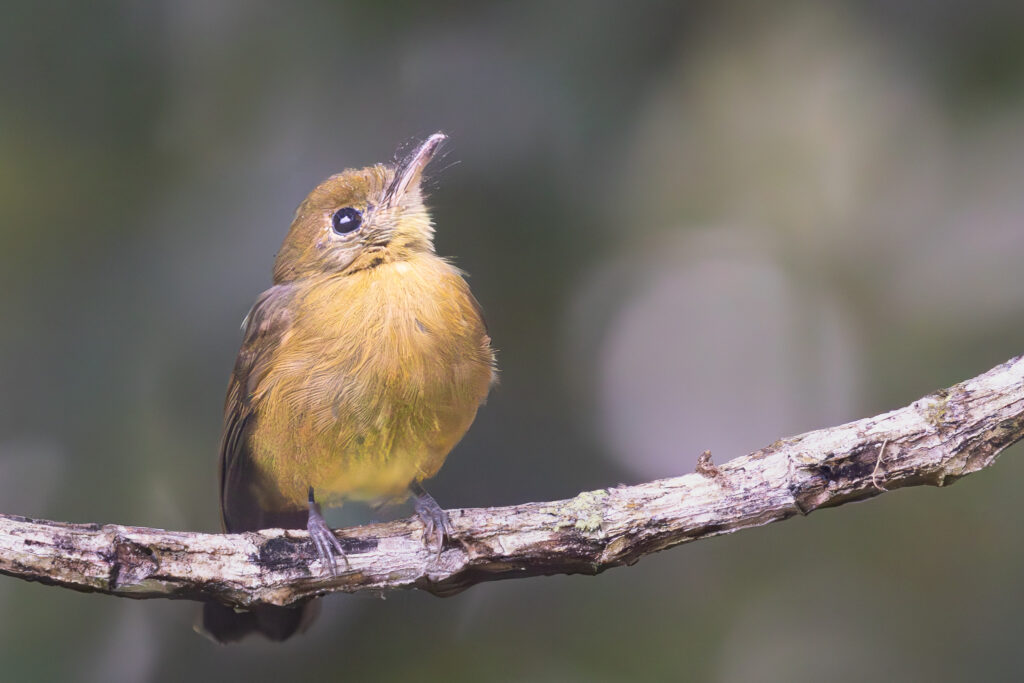
Fortunately, the trail wasn’t as treacherous as I feared. The ground was damp, but the soil and leaves seemed to have absorbed most of the rainfall, so the trail didn’t have much mud and standing water. Steps built into the trail, along with a rubber handrail, made the descent very do-able. Pausing at the moth trap, a great birding area we would visit on the way back up, we turned off our headlamps as the first light of the day penetrated the cloud forest, and made our final push. About 25 minutes after we had departed, we arrived at the lek, an area with lots of open space for the birds to strut their stuff, and a small shelter with benches for birdwatchers.
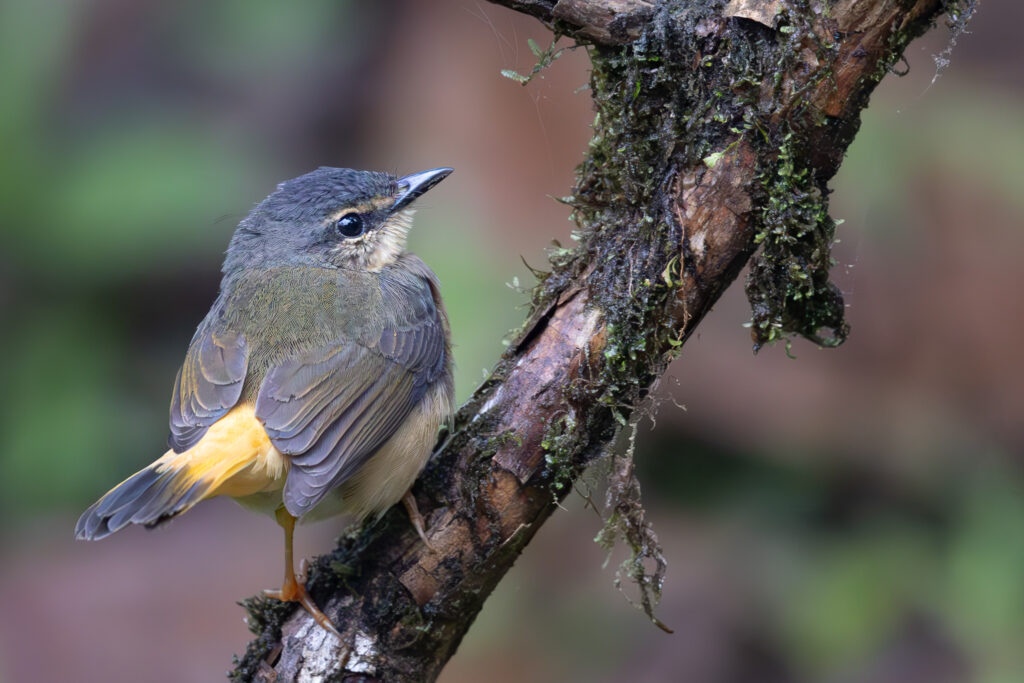
Immediately we saw two male Andean Cock-of-the-rocks, then three, and eventually five. These were the strangest-looking birds I’ve ever seen — veritable avian aliens. Bright red on the head and chest, black wings, silver tertiary feathers in the back, large pale staring eyes, a helmet-like round crest on the head with their bills only barely visible at certain angles, and bright orange legs. They perched on branches, and periodically pranced with herky-jerky movements to attract the attention of females. Their periodic calls, which eBird describes as “piglike squeals,” were odd guttural shrieks, comical to the human ear.
We did not see any females, which are brownish and look more like a conventional bird species, but we assumed they lurked nearby. Despite the absence of the females, I felt privileged to witness this display and add this remarkable Andean cloud forest dweller to my Life List. It was a sublime encounter that I will always treasure.
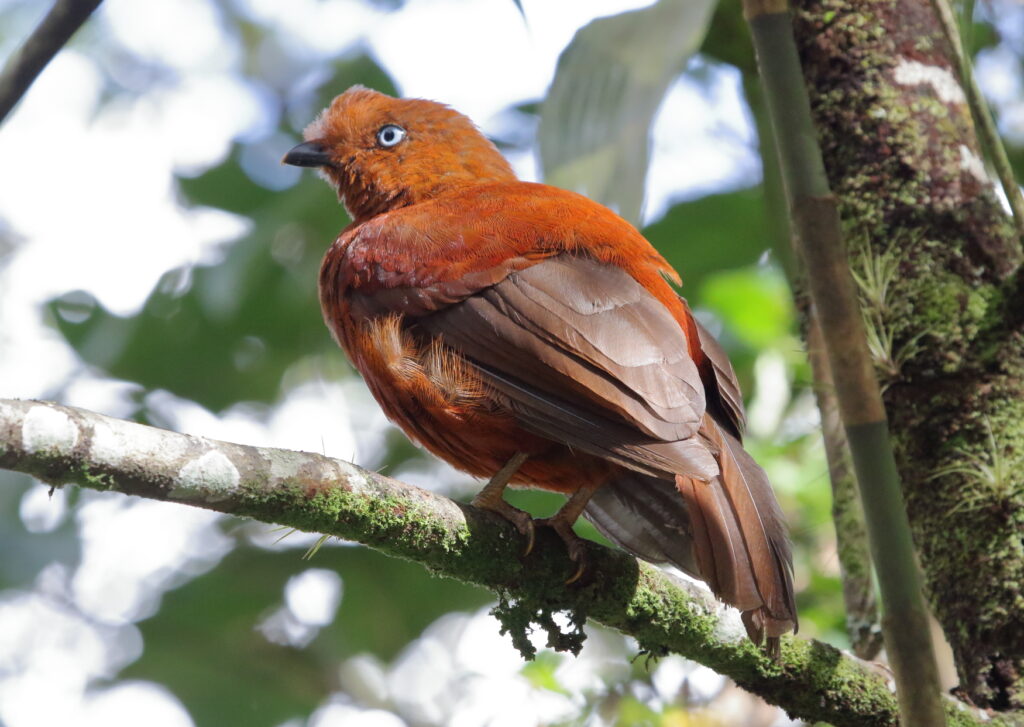
A huffy puffy ascent awaited us—but also a treat about a third of the way back to the top: the moth trap. The trap is a large white canvas sheet suspended vertically, and is a birder’s delight. Moths and other insects land on it, providing a feasting opportunity for resident cloud forest birds, which converge and gorge on bugs they pick off of the canvas. Pausing here, we racked up 15 species in 20 minutes of very fun birding. They included four species you can find in the United States: Summer Tanager, Canada Warbler, Acadian Flycatcher, and Blackburnian Warbler. The rest were species I’ve never encountered before. We saw five flycatcher species, including great looks at a handsome Tawny-breasted Flycatcher. Four warbler species graced us with their presence, including a very cooperative Buff-rumped Warbler. A Yellow-throated Chlorospingus, a yellowish “tanager-like sparrow” (eBird), dined on a big fat moth.

The superstar of the show was a Squirrel Cuckoo, a large dull orange bird with a yellow bill and a long black and white tail. It flew in and perched on a branch out in the open right in front of us, giving us fantastic looks and unbeatable photo opportunities. It would be my only sighting of that species during my 16-day Colombian adventure.
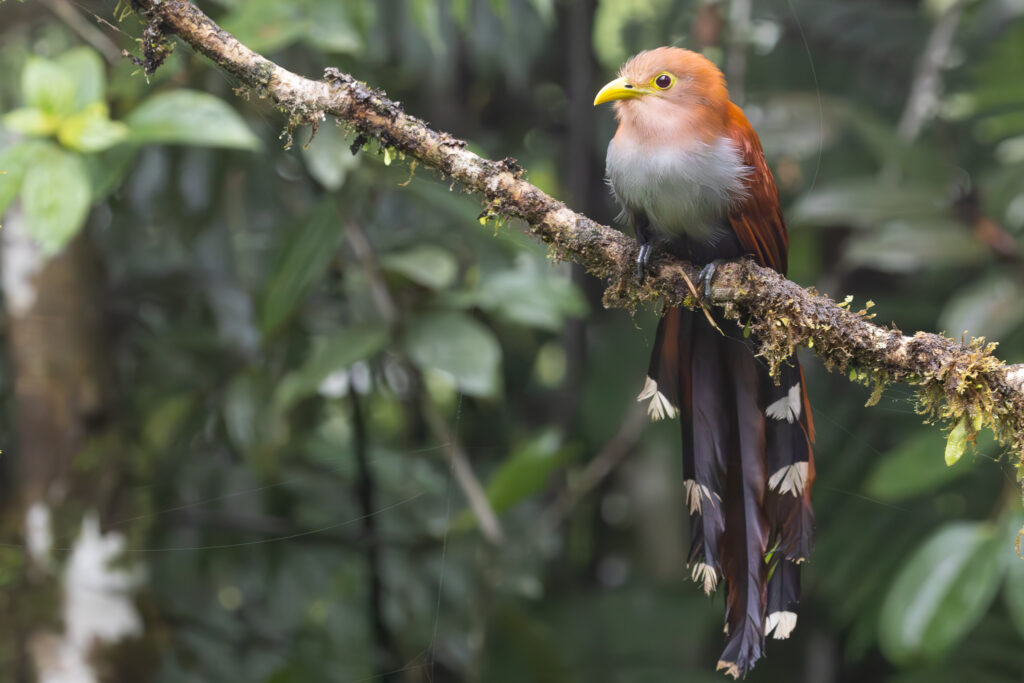
Elated, we climbed up the remainder of the trail, arriving back at Doña Dora’s place, where a pile of scrambled eggs and a full morning of world-class birding awaited us. If you ever have the chance to take a birding trip to the birdiest country on earth, do not miss the opportunity to visit this cloud forest gem.
https://ebird.org/checklist/S215430499
If you enjoyed this post, be sure to check out our previous Colombian birding blogs:
Video Post: A Visit to Araucana Lodge (Colombia Birding Part 4)
Antpittas and Tody-Flycatchers (Colombia Birding Part 3)

